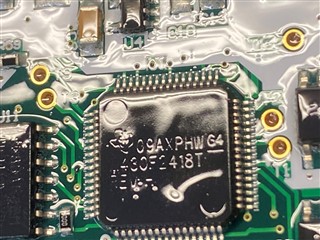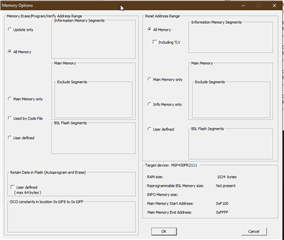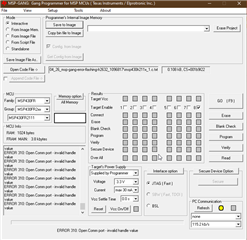Other Parts Discussed in Thread: MSP-GANG, , UNIFLASH
Hi,
We are using MSP-Gang Programmer to program the MSP430F2418 microcontrollers. We are seeing issue where those devices failed with blank check error. We were able to program successfully previously the these devices.
We are using external supply (battery) for the target during programming. The signals connected to MSP430 are TDO(1), TDI(3), TMS(5), TCK(7), RST(11), GND(9). Target Vcc is connected to pin 2 on the 14-pin JTAG connector for sensing.
We'd like to know if you have any suggestion. Could you please advise?
Thanks,
Charlie






